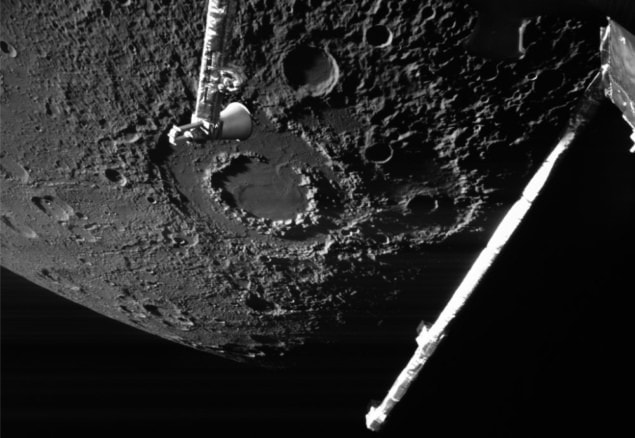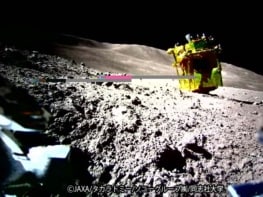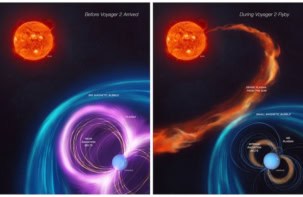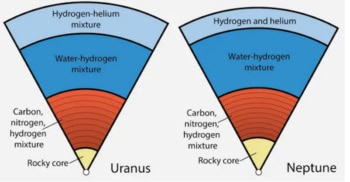
The BepiColombo mission to Mercury – Europe’s first craft to the planet – has successfully completed its fourth gravity-assist flyby as it uses the planet’s gravity to enter orbit around Mercury in November 2026. As it did so, the craft captured its best images yet of some of Mercury’s largest impact craters.
BepiColombo, which launched in 2018, comprises two science orbiters that will circle Mercury – the European Space Agency’s Mercury Planetary Orbiter (MPO) and the Japan Aerospace Exploration Agency’s Mercury Magnetospheric Orbiter (MMO).
The two spacecraft are travelling to Mercury as part of a coupled system. When they reach the planet, the MMO will study Mercury’s magnetosphere while the MPO will survey the planet’s surface and internal composition.
The aim of the BepiColombo mission is to provide information on the composition, geophysics, atmosphere, magnetosphere and history of Mercury.
The closest approach so far for the mission – about 165 km above the planet’s surface – took place at on 4 September. For the first time, the spacecraft had a clear view of Mercury’s south pole.

One image (top), taken by the craft’s M-CAM2 camera, features a large “peak ring basin” inside a crater measuring 210 km across, which is named after the famous Italian composer Antonio Vivaldi. The visible gap in the peak ring is thought to be where more recent lava flows have entered and flooded the crater.
BepiColombo will now conduct a fifth and sixth flyby of the planet on 1 December and 8 January 2025, respectively, before arriving in November 2025. The mission is planned to operate until 2029.



